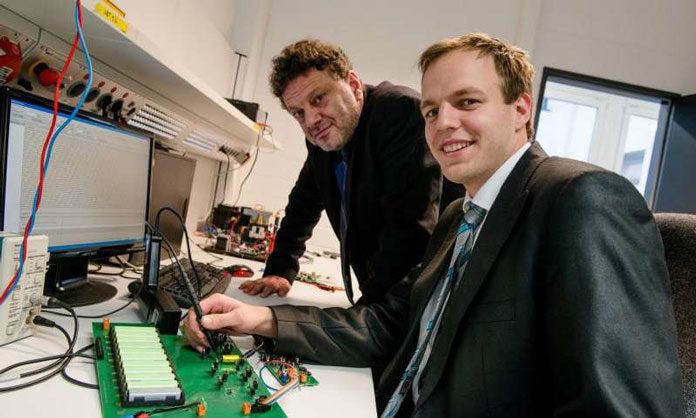Generally, electric vehicles consist of rechargeable batteries. Those batteries have different blocks of twelve cells. There is voltage sensor for each cell which monitors cells. Scientists from Ruhr-Universität Bochum have developed a new sensor technology for electric vehicle (EV) batteries. Designed by Philip Dost, the new system requires only one single voltage sensor, thus reducing overall weight and costs.
The lithium cells in EV batteries are inflammable. For example, in the Samsung smartphones, that burst into flames (September 2016). In the case of vehicles, they need to be continuously monitored. Monitoring typically requires a current sensor and several voltage sensors as there are individual cells. And this is the only way to monitor them.
This new sensor technology made by scientists by Bochum has reduced the number of necessary current and voltage sensors to one each, regardless of the number of cells. Both sensors perform the function of cell balancing. It ensures an even energy redistribution in the cells.
Philip Dost explained, “Just like the cells, the sensors are a considerable weight and cost driver. Some industrial enterprises have already expressed their interest in our innovation.”
In this new sensor, each cell performs differently during charging and discharging cycle. At the end, some cells get more charge. If one cell gets fully charge, the discharging cycle of another cell stopped. If one of the cells is empty, no energy is extractable from the other cells, either. The older the system, the bigger the problem. Cell balancing counteracts this phenomenon. It ensures that older systems keep providing maximum energy yield.
In addition to electronic vehicles, this new sensor technology will be used in a wealth of other battery systems. For example in mobile devices such as tablets or laptops, wireless electrical tools, uninterruptible power supply systems.
Scientists noted, “We are also going to replace individual components, in order to meet the requirements of the automotive industry.”
Related:
- Chemical sensing at telecom wavelengths
- Gas Biosensor ‘See’ Through Soil to Analyze Microbial Interactions
- Engineers Develop a New Biosensor Chip for Detecting DNA Mutations
